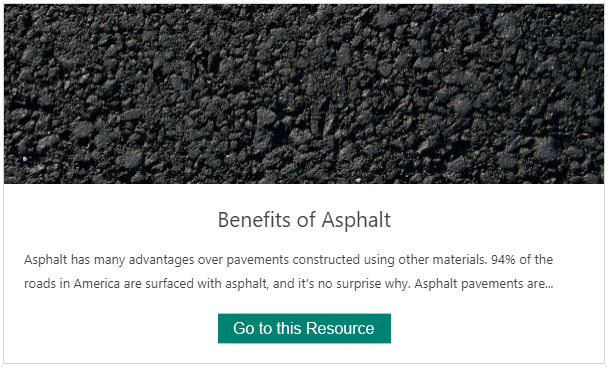8 Simple Techniques For A1 Professional Asphalt & Sealing Llc
8 Simple Techniques For A1 Professional Asphalt & Sealing Llc
Blog Article
The Basic Principles Of A1 Professional Asphalt & Sealing Llc
Table of ContentsTop Guidelines Of A1 Professional Asphalt & Sealing LlcUnknown Facts About A1 Professional Asphalt & Sealing LlcWhat Does A1 Professional Asphalt & Sealing Llc Do?Top Guidelines Of A1 Professional Asphalt & Sealing LlcSome Of A1 Professional Asphalt & Sealing Llc

The oil in a vehicle engine is not just oil. It includes a variety of additives to enhance the automobile's performance. These consist of polymers, viscosity modifiers, warmth stabilizers, added lubricants, and put on additives. The REOB has all the ingredients that were in the waste oil as well as the wear metals from the engine (mainly iron and copper).
By making lots of blends making use of different REOB samples and various asphalt binders, the variations greatly can be averaged out. Numerous States provided examples of well-known REOB make-up to TFHRC researchers, that assessed the samples to contrast the percentage of added (known) REOB to the discovered (checked) amount. The evaluations showed a similar percent of included and located REOB.
Examine This Report on A1 Professional Asphalt & Sealing Llc
They received a frustrating feedback. The TFHRC researchers evaluated 1,532 samples from 40 States, one Canadian province, and two Government Lands Freeway divisions. They evaluated each example twiceamounting to more than 3,000 evaluations. None of those States understood that the asphalt they were purchasing included REOB. One State urged its samples had no REOB.
Of the 1,532 samples tested, 12 percent included REOB, and some contained substantially high degrees of it at 1020 percent. The highest degree was 34 percent in an example from Texas, which TxDOT had actually utilized in a patching substance. This screening likewise revealed the visibility of phosphoric acid in 11 percent of the examples, and 2 percent consisted of ground tire rubber.
Two years ago at TRB's yearly meeting, the Federal researchers held an REOB workshop and offered the findings of their lab evaluations to a standing room-only group. Some agencies do not specifically ban REOB, they do enforce physical examinations that prevent its useeffectively a ban. Others do not ban it by specification, however have agreements with asphalt suppliers to stay clear of using REOB
Some Of A1 Professional Asphalt & Sealing Llc
A handful do permit REOB, some within specific limitations. For instance, Ohio and Texas limit degrees to less than 5 percent of the asphalt. To create a reliable test approach that all States can utilize, the TFHRC scientists established a round-robin test plan. The participants are 11 State freeway companies (Illinois, Massachusetts, Minnesota, Mississippi, Montana, North Carolina, Oklahoma, South Carolina, Texas, Vermont, and Wyoming), 2 independent testing laboratories, the Ministry of Transportation in Ontario, Queen's College in Ontario, and an Ontario paving specialist.
In total, the scientists prepared and delivered 720 blends. The participants are examining the samples separately utilizing the standards given by the TFHRC scientists. The round-robin screening is virtually completed, and TFHRC is in the process of accumulating the results. The output will be a recommended AASHTO examination technique that any kind of State can take on and use (a-1 asphalt).
The pavement with REOB, which lies 0.6 mile (1 kilometer) from the pavement without REOB, has the same subgrade, web traffic thickness, and climate. Nevertheless, the segment of Highway655 with 5 to 10 percent REOB revealed significant cracking. In this instance, the presence of REOB was the recognized reason for cracking at a low temperatures.
"In our experience in copyright, also small amounts of 23 percent can be a problem." An area of test sidewalk in Minnesota (MN1-4) found to consist of REOB also split too soon. The pavement done well for the initial 3 to 4 years, however after that started to split. This pavement is also based on reduced temperatures.
Examine This Report about A1 Professional Asphalt & Sealing Llc
The tests were not considerable, but they showed that at levels of 6 percent or even more, the tensile strength of the asphalt dropped considerably. At a level of 3.5 percent REOB, the variation in the physical test techniques was more than the impact of REOB. It was tough for scientists to examine whether REOB was present. https://hearthis.at/john-tally/set/a1-professional-asphalt-sealing-llc/.

One binder parameter thought about is the difference between the low temperature level vital requirements temperature for rigidity (S) in the flexing beam of light rheometer and the bending beam of light rheometer creep incline (m-value) noted as Tcritical. TC = TC (S) TC (m-value). Evaluation of this parameter is still ongoing. Two independent research groups, one from AASHTO and the various other from the Asphalt Institute, wrapped up that even more research study is needed on using REOB in asphalt.
Previously, all asphalt testing determined engineering residential or commercial properties such as tightness. These tests do not reveal what materials had been added to the asphalt.

5 Easy Facts About A1 Professional Asphalt & Sealing Llc Described
These results demonstrate there are weak points in the standard design screening protocols that may be made use of. The manufacturer may have an economic advantage and the product passes all the standardized tests, however the item might not be valuable to guaranteeing lasting performance. To address this issue and the expansion of brand-new asphalt ingredients and extenders, TFHRC is beginning a study moved here program to use portable spectroscopic devices, x-ray fluorescence spectroscopy, and Fourier transform infrared spectroscopy to allow analyses to be done in the field as opposed to needing to take samples back to the laboratory.
Report this page